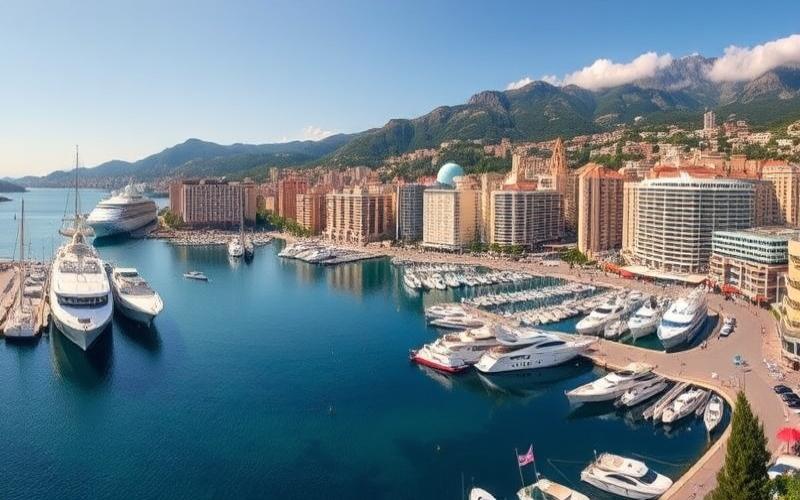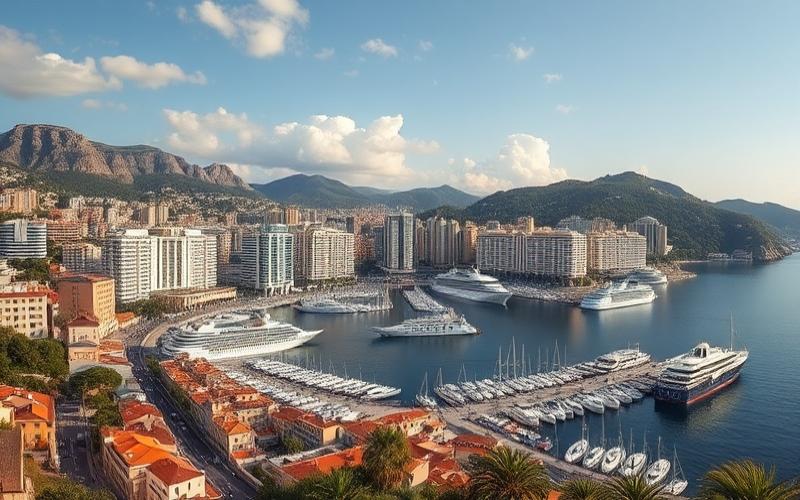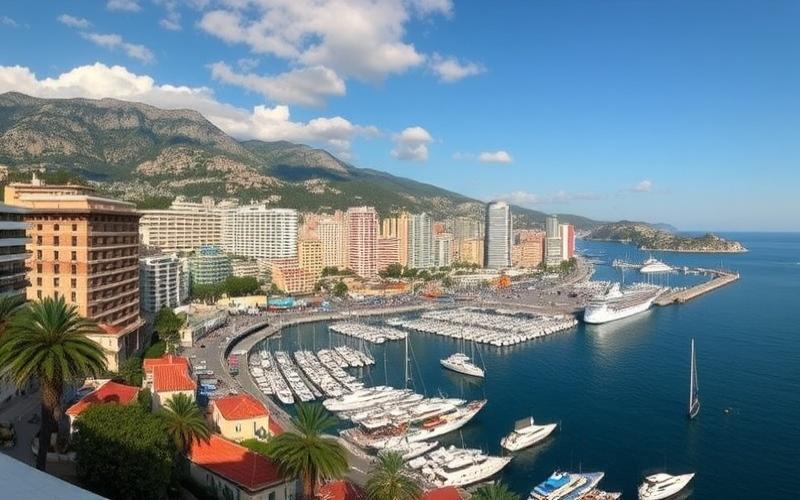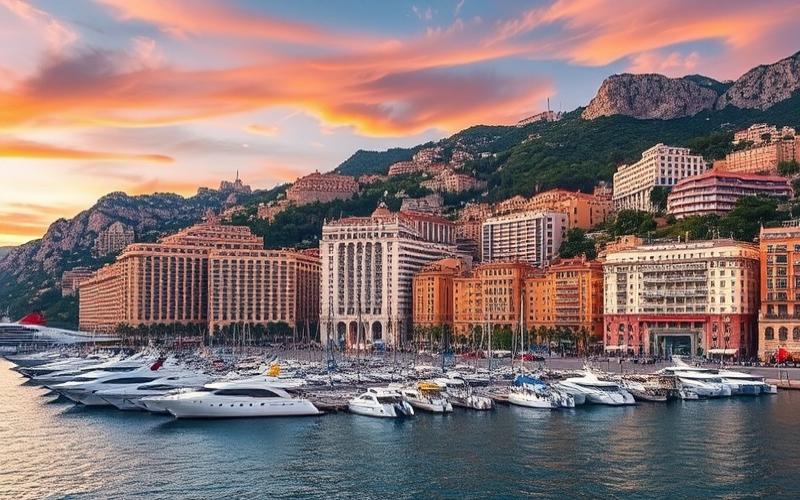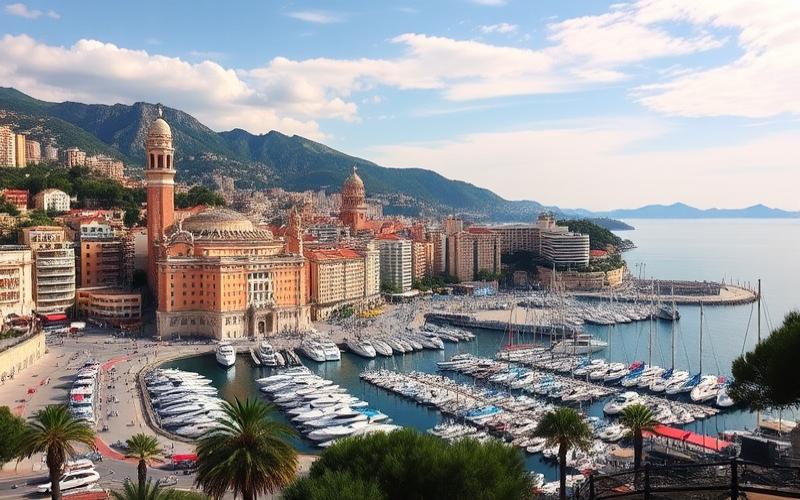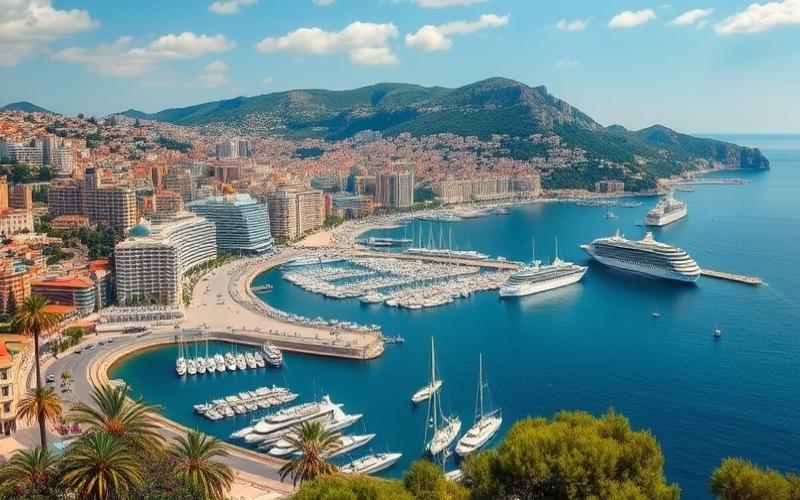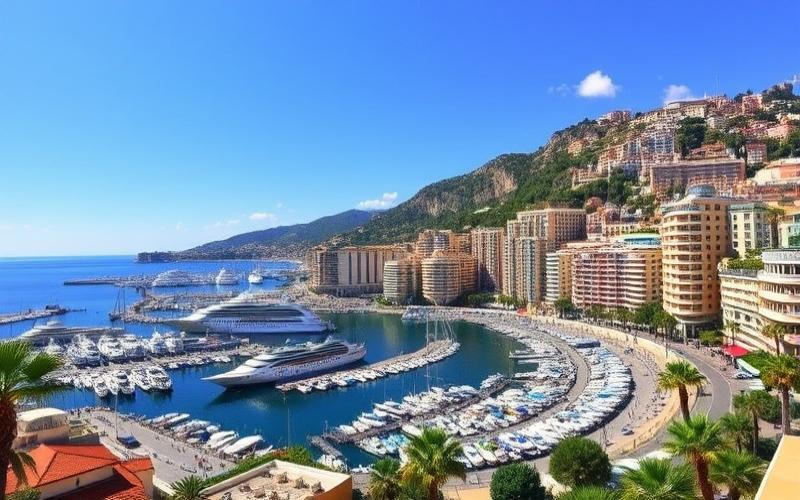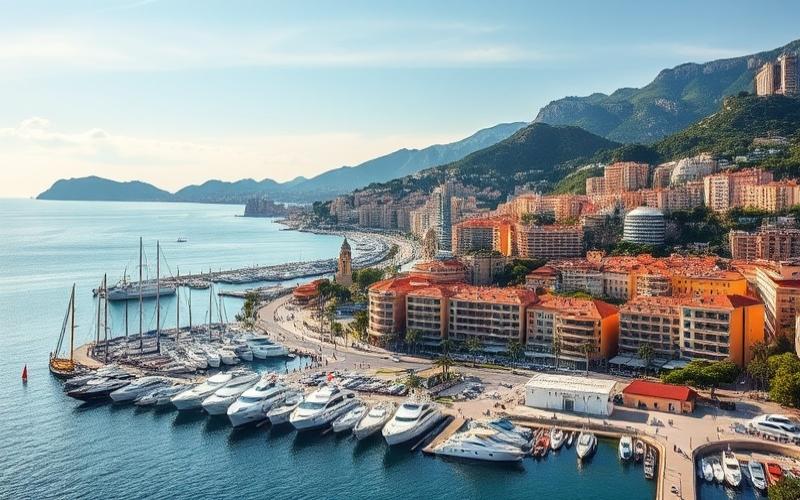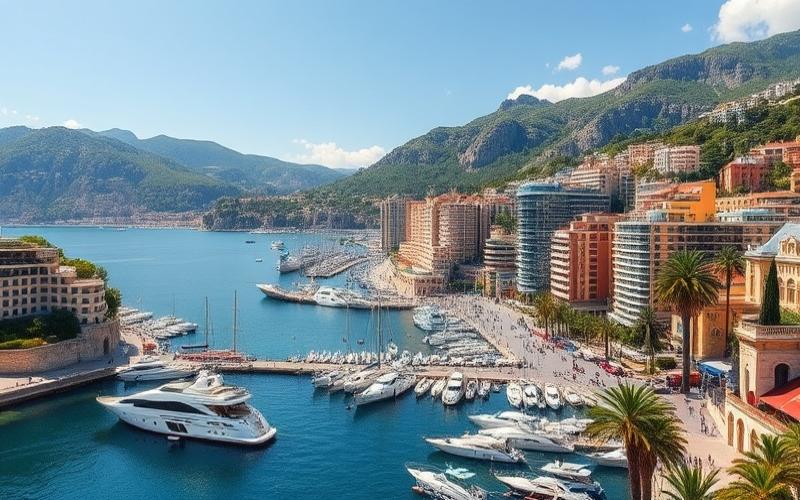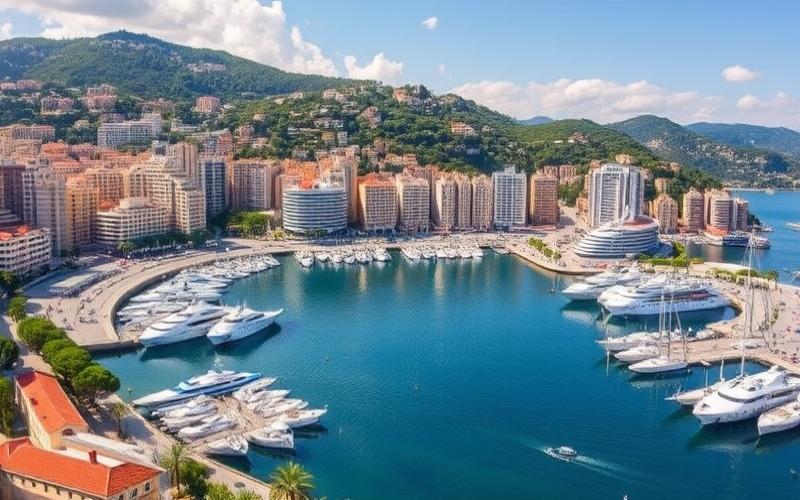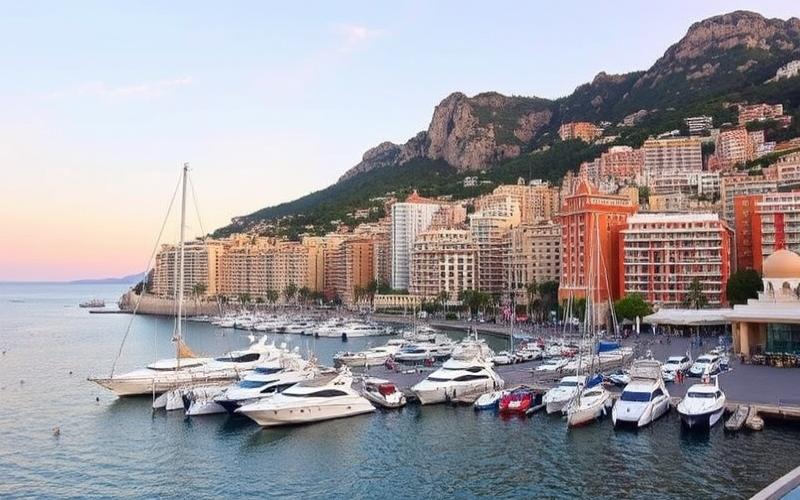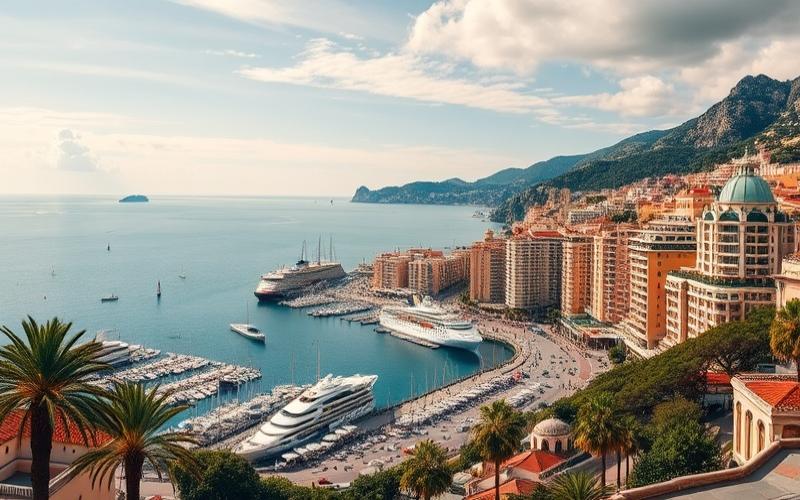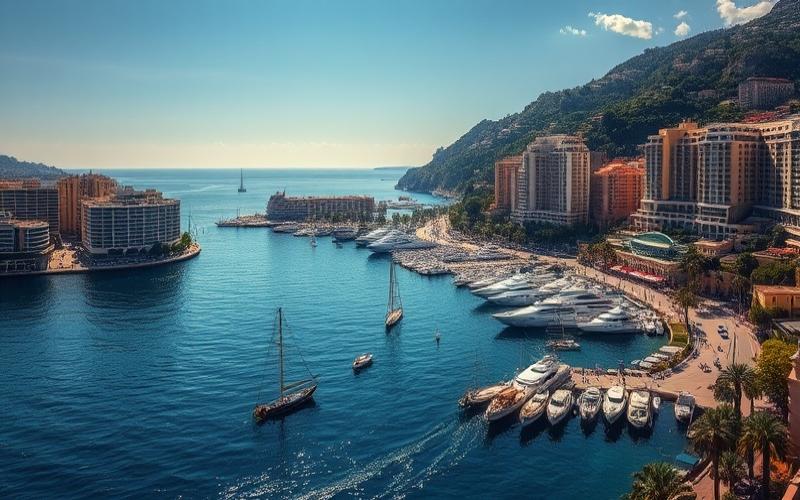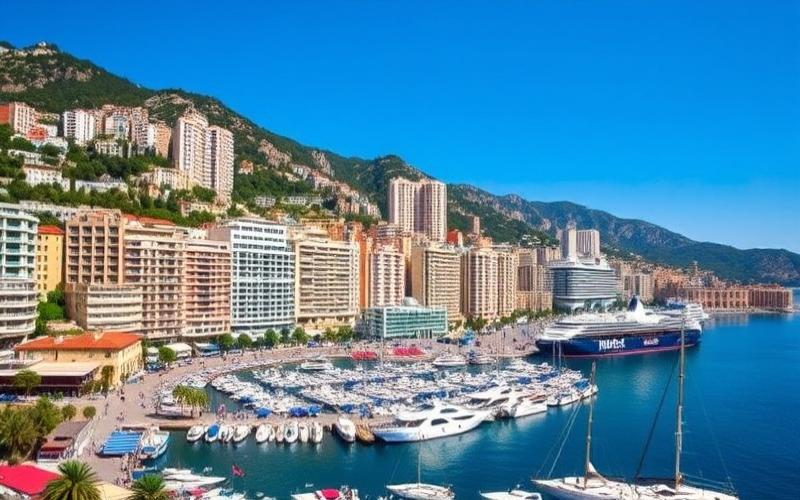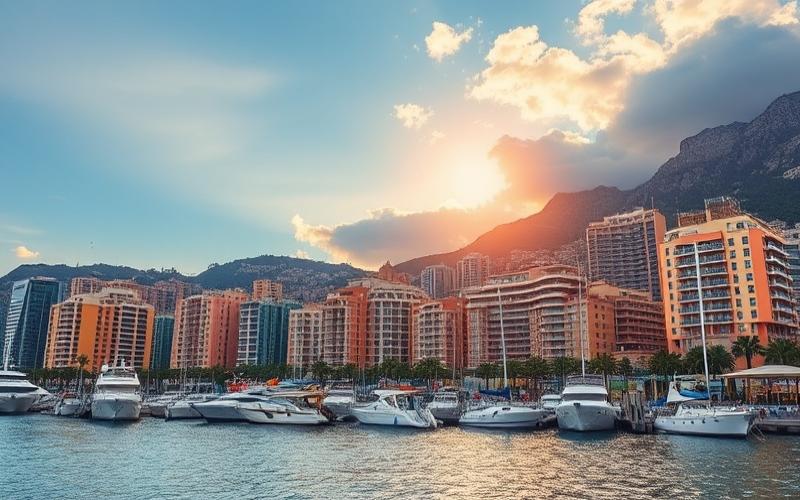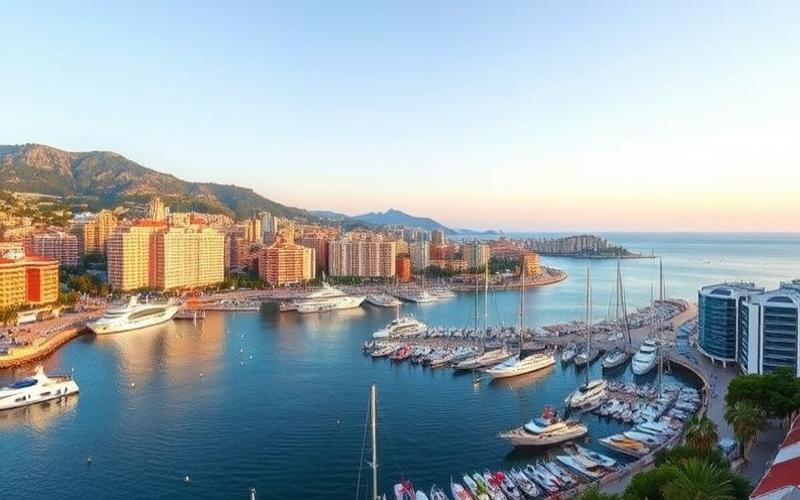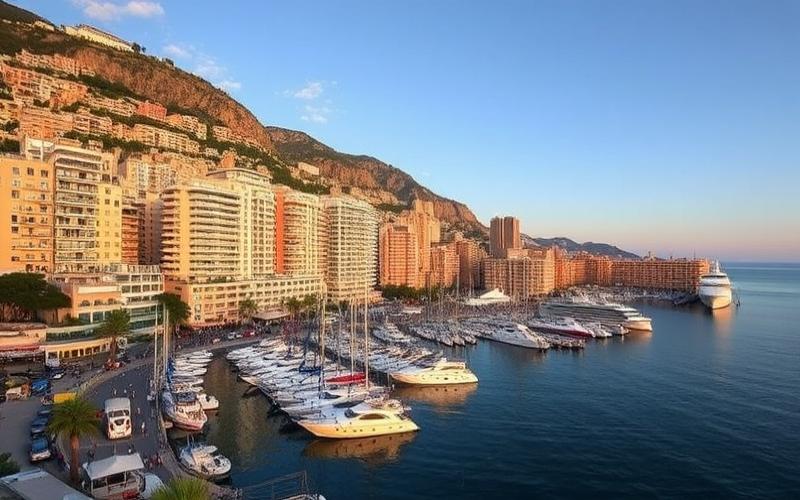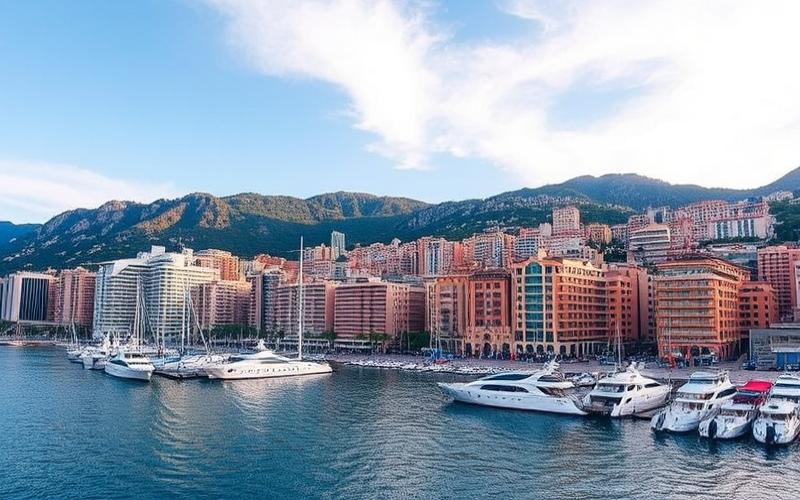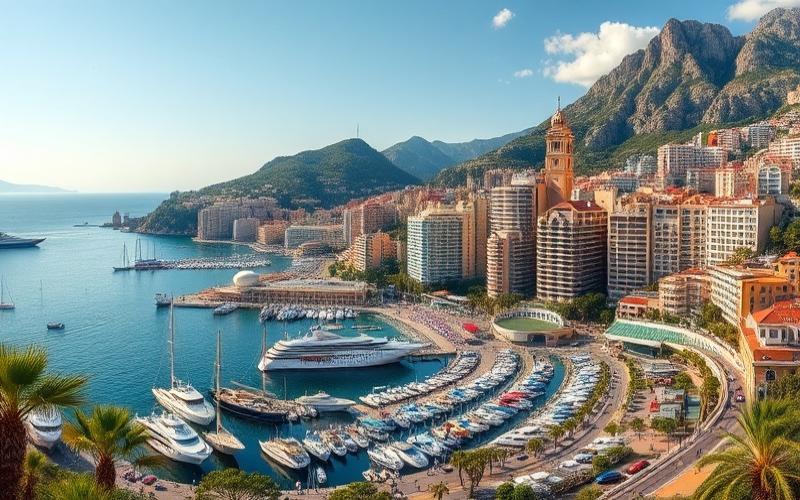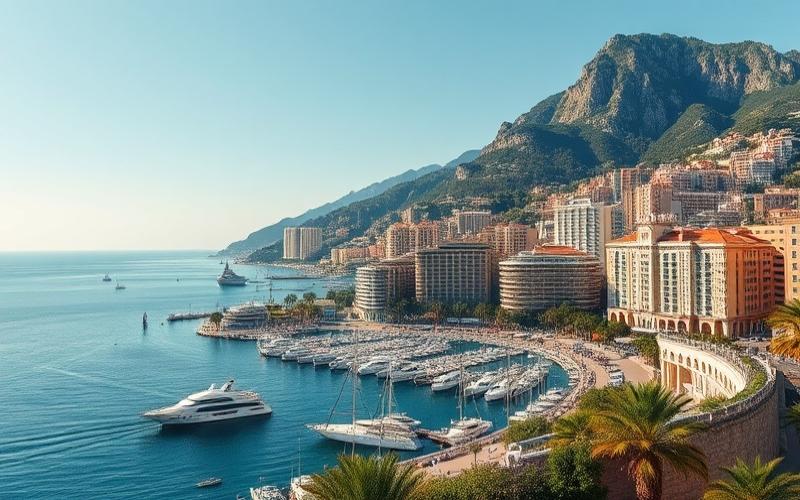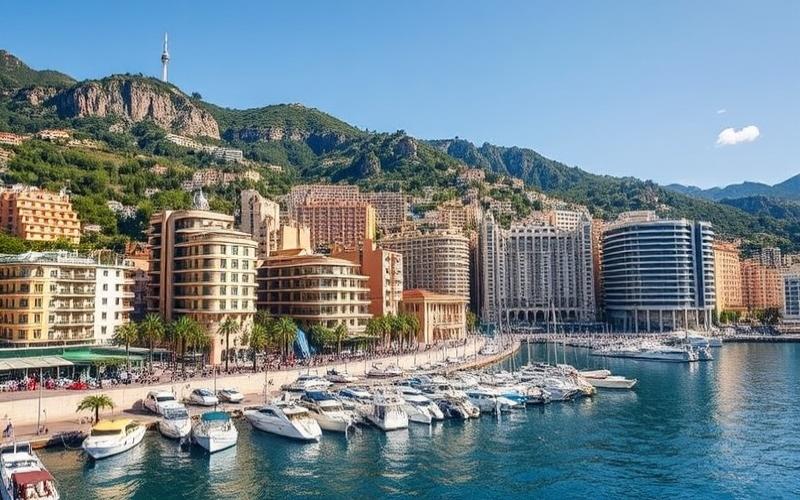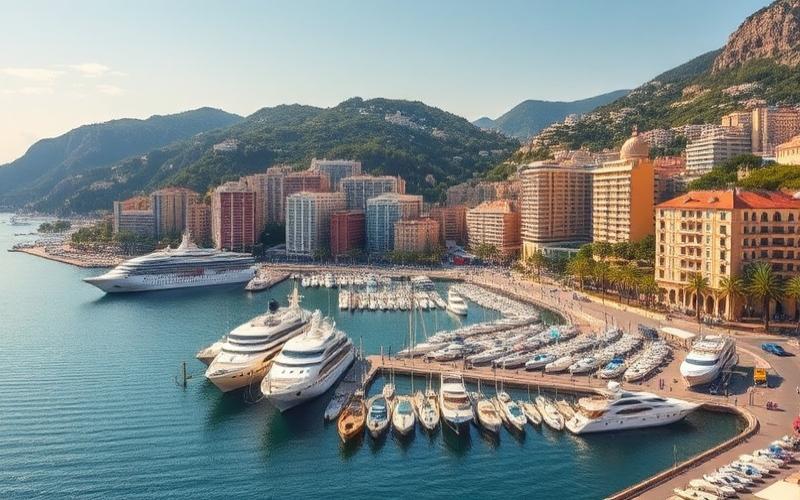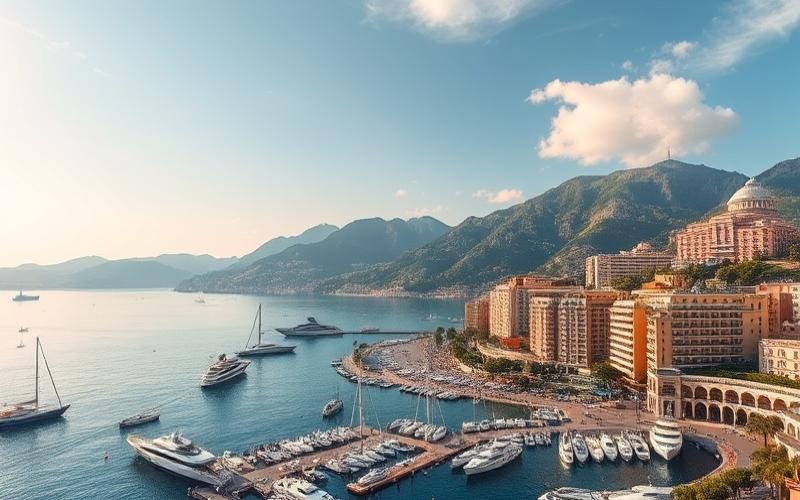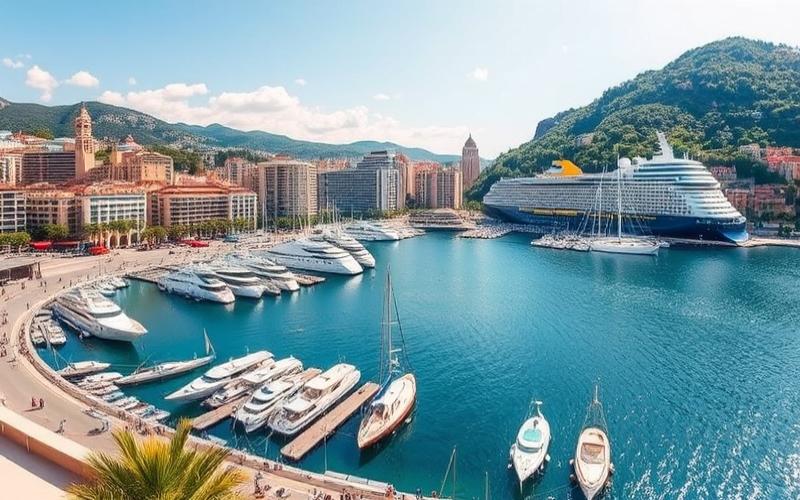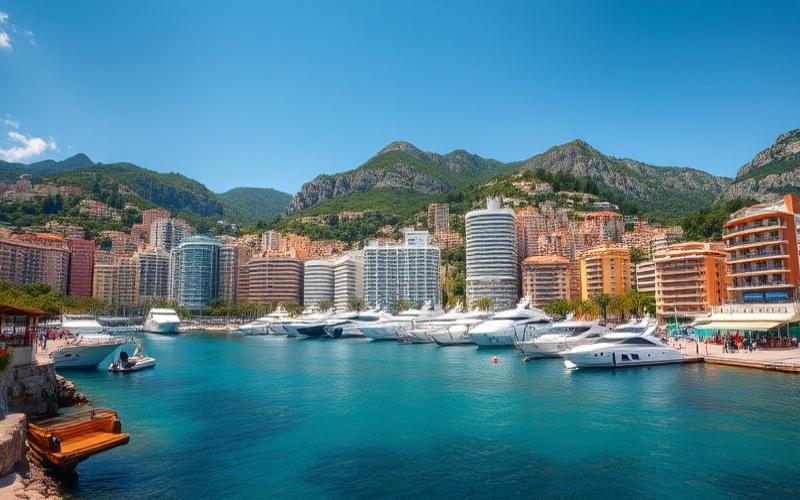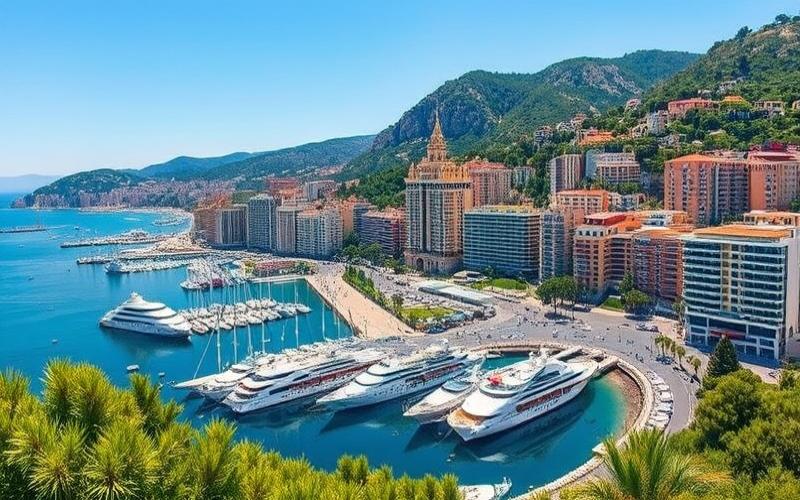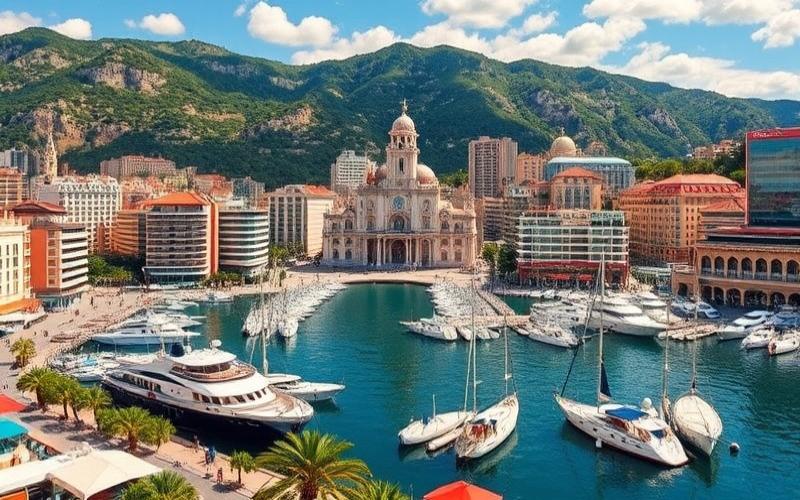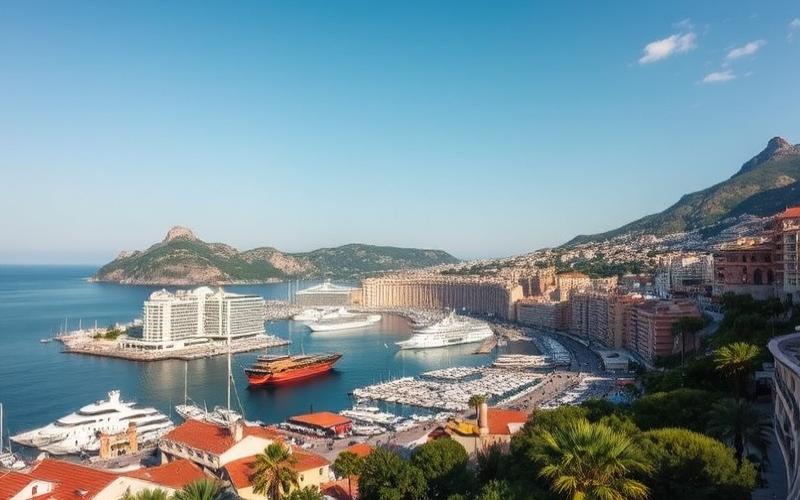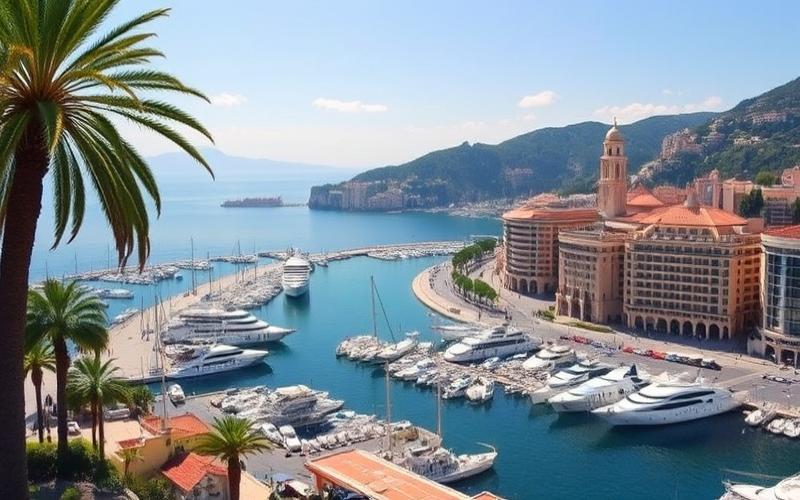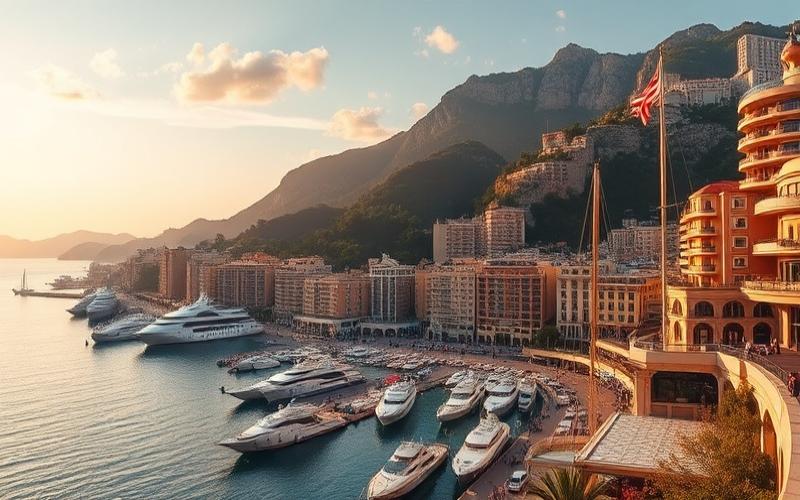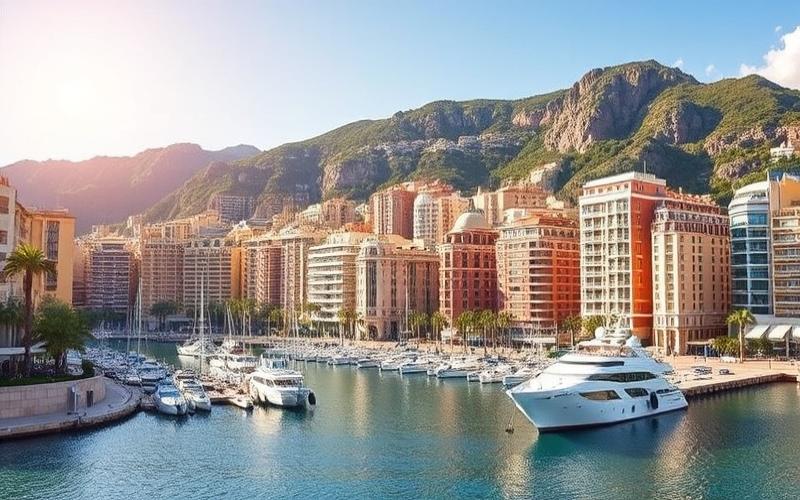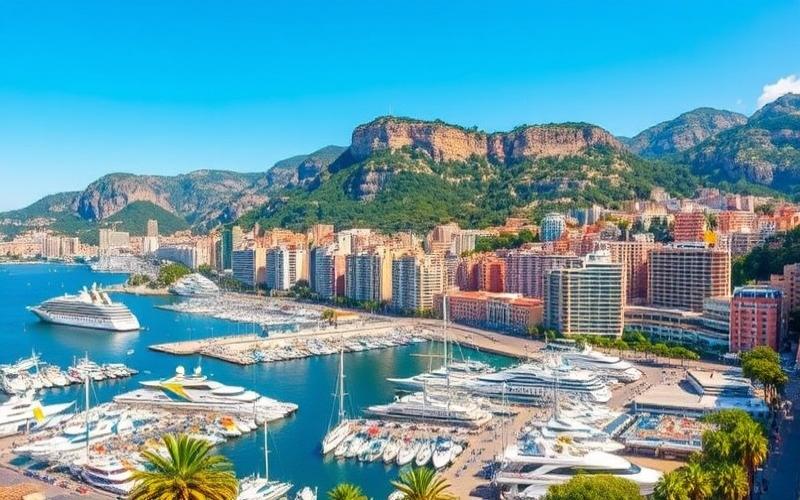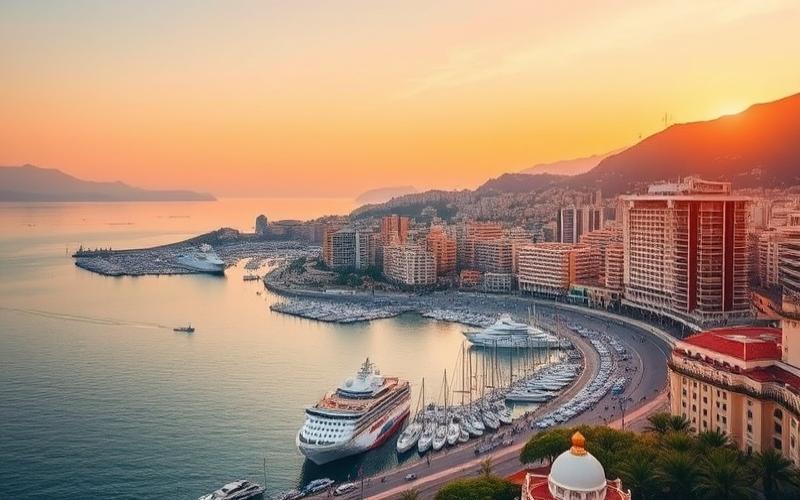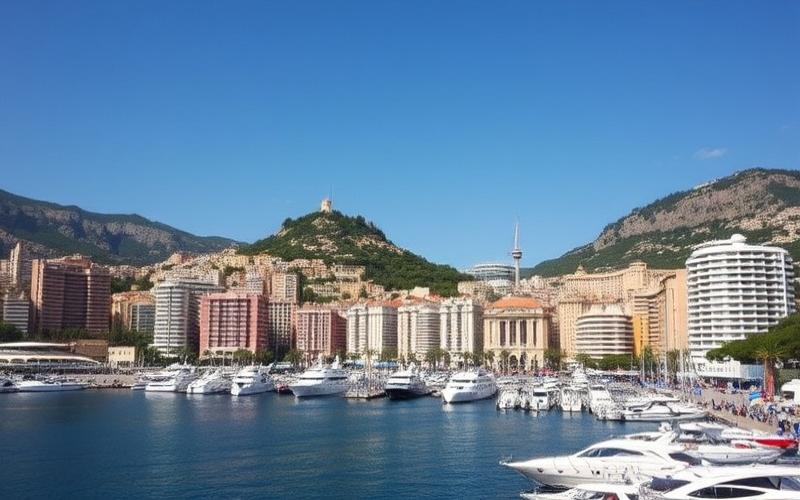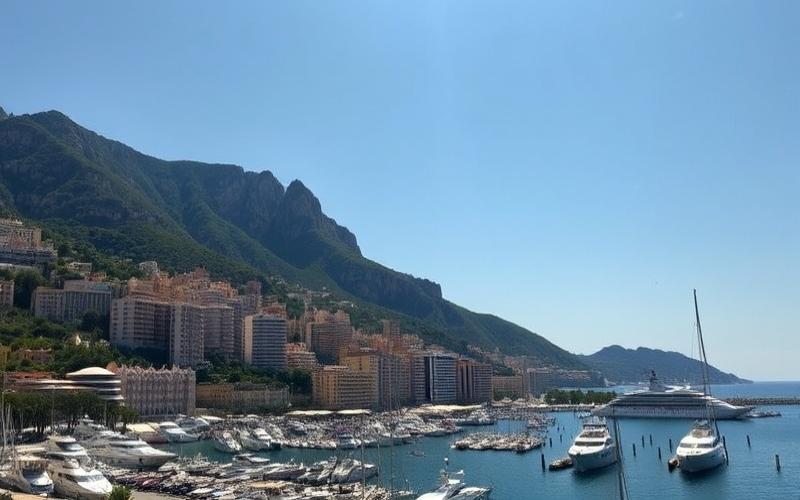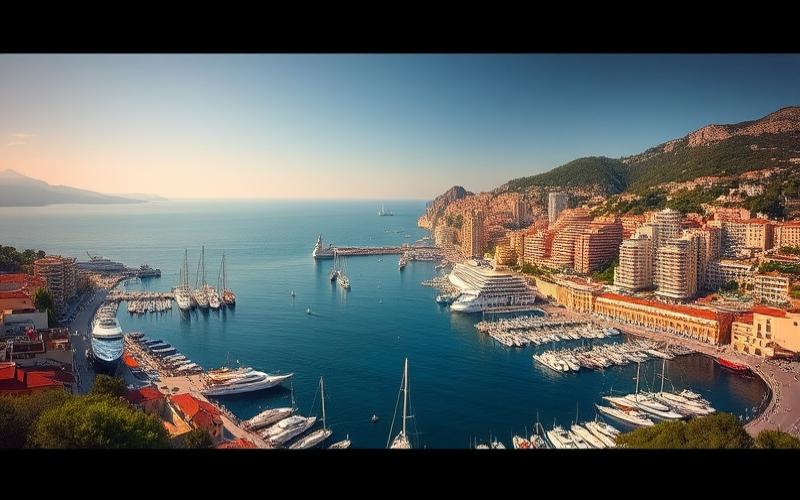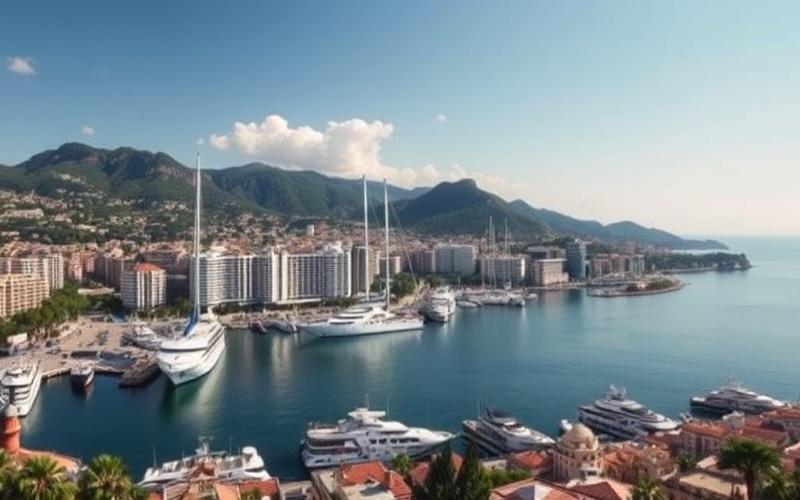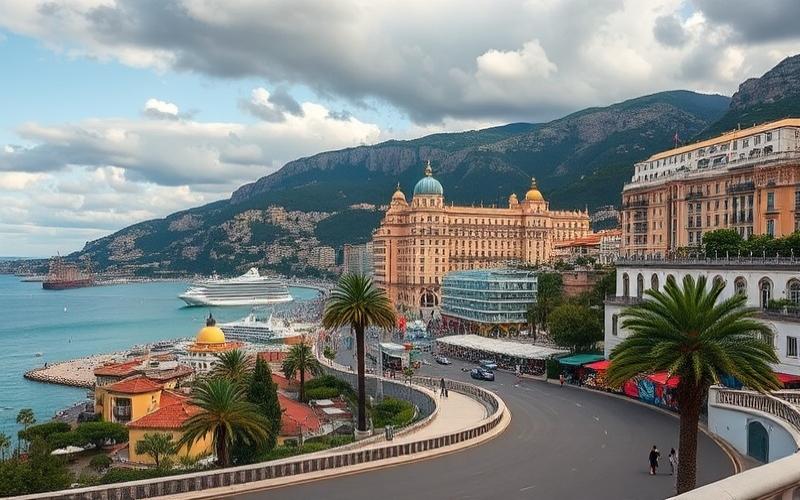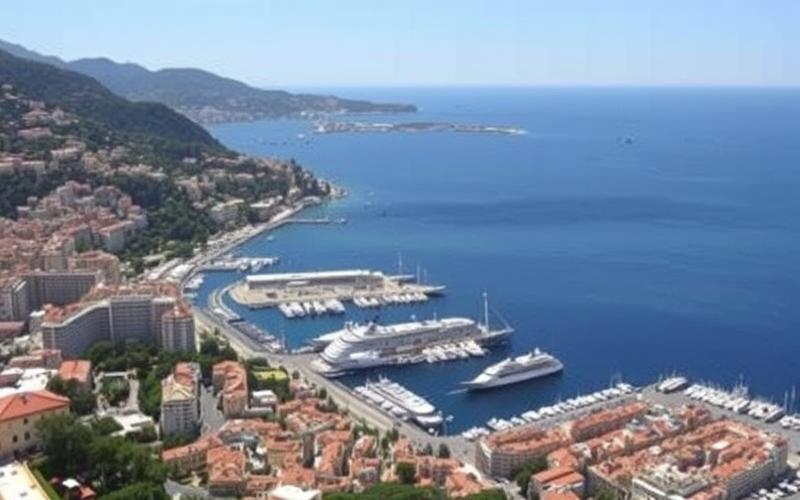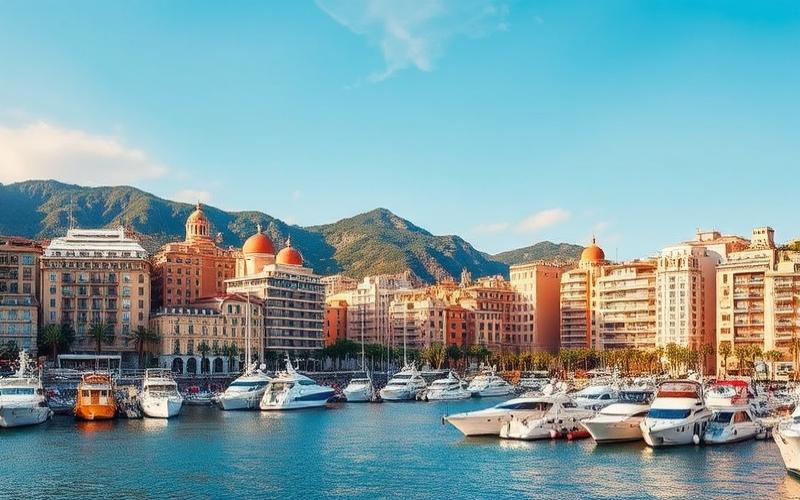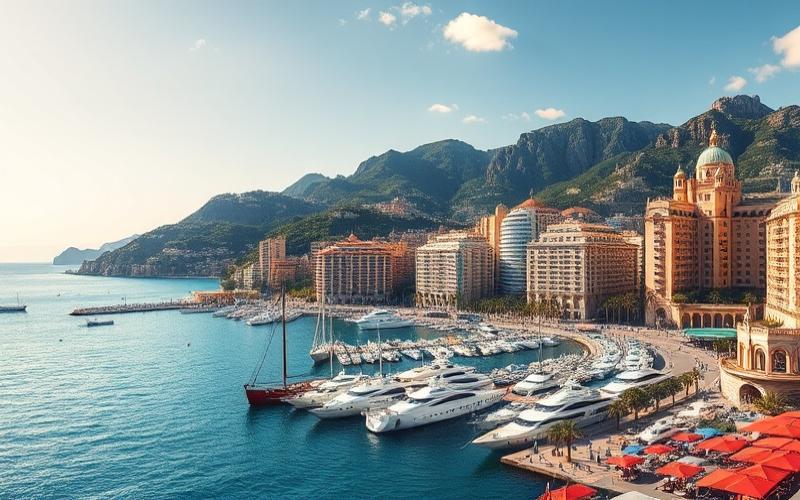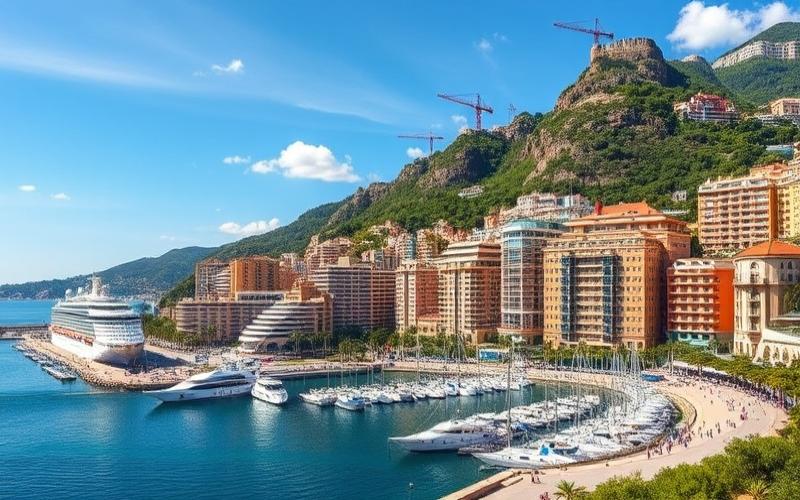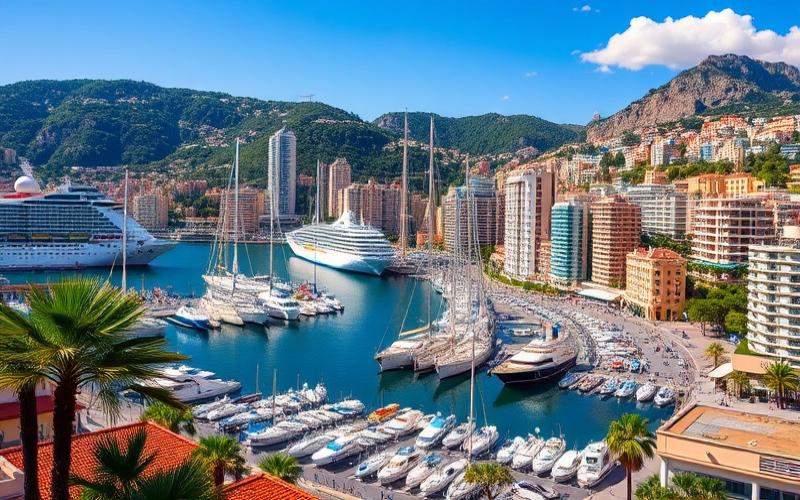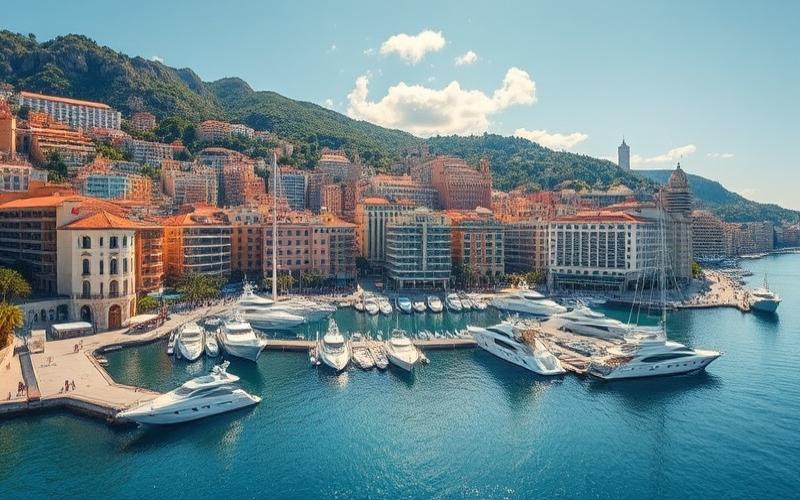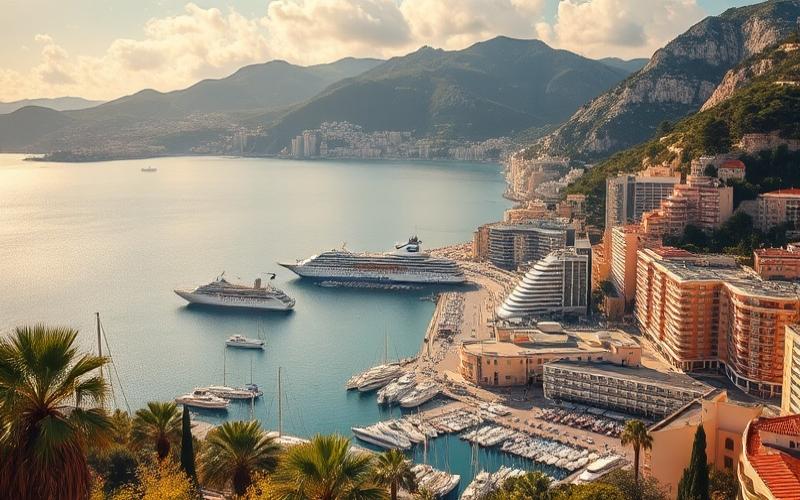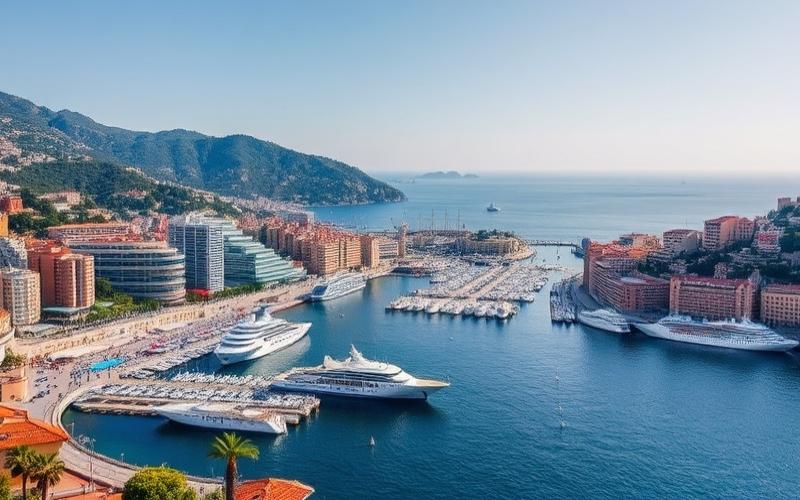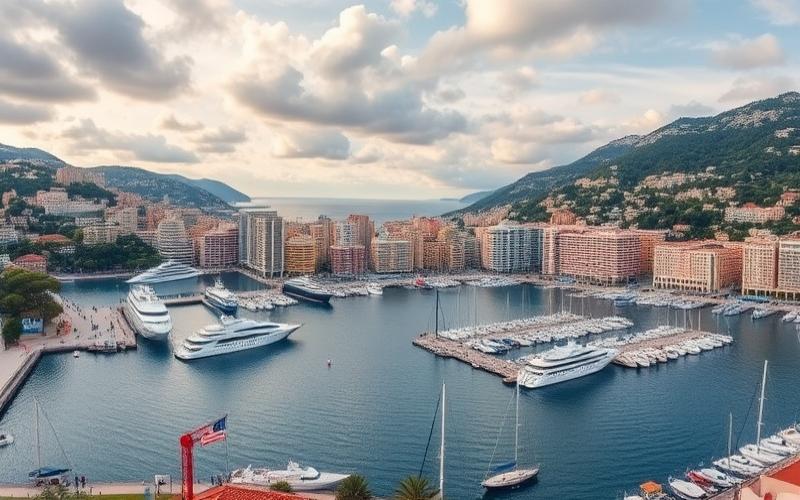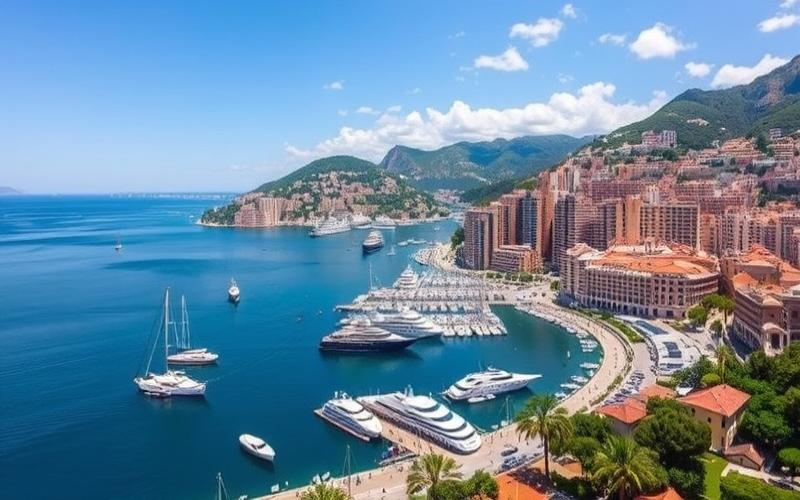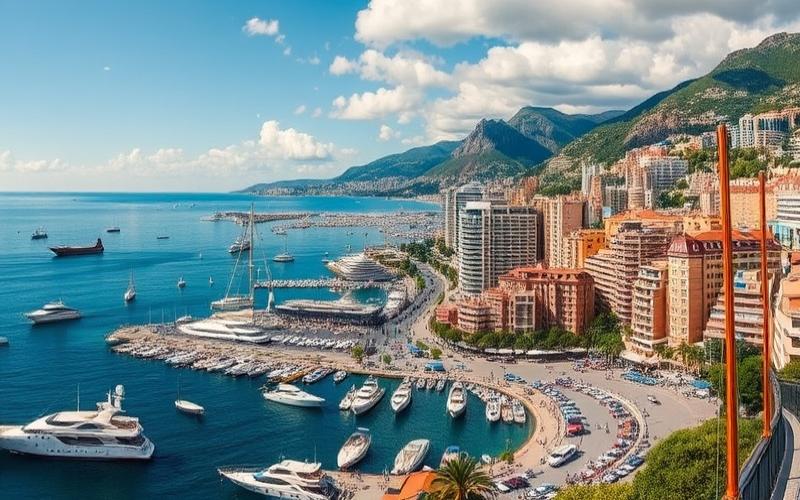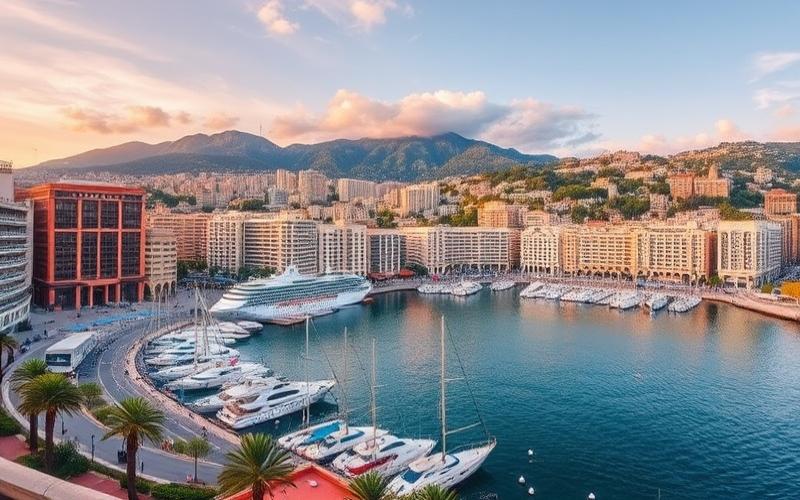
 Published on and written by Cyril Jarnias
Published on and written by Cyril Jarnias
Nestled between sea and mountains, the Principality of Monaco, though small in size, aims to push the boundaries of contemporary urban planning through a series of bold development projects planned for the coming years.
Considering its unique geographical constraints, Monaco continues to demonstrate an exceptional ability to innovate and maximize its limited space while preserving its prestigious allure.
This article explores how the principality plans to integrate ecological solutions and cutting-edge technologies into expanding its territory, thereby redefining the horizons of luxury and urban sustainability.
Upcoming Transformations in Monaco’s Real Estate Landscape
Major transformations in Monaco’s real estate landscape are structured around several iconic projects, driven by an ambitious urban vision and government policies focused on sustainable modernization and international prestige.
Ongoing or Scheduled Urban Development Projects:
- Mareterra (Maritime Extension):
- Creation of a new neighborhood on the Mediterranean Sea (+6 hectares), inaugurated last December.
- €2 billion project, integrating ultra-luxury residential spaces (110 apartments, 4 townhouses, 10 villas), a marina, coastal walkways, a public park, and shops.
- Architectural design by Renzo Piano with a strong ecological focus: planting over 1,100 trees, innovative sea level management using mobile docks to anticipate rising waters.
| Project | Area / Nature | Ecological Features | Price per m² |
|---|---|---|---|
| Mareterra | +6 ha sea extension | Abundant green spaces, climate-adaptive structures | >€100,000 |
- Urban Land Requalification:
- Two newly reclassified sites to host an eleven-story residential building near Larvotto and a future project planning 76 to 90 housing units reserved for Monegasques. These developments also include creating landscaped public pedestrian spaces connecting existing neighborhoods.
- Modernization of Carré d’Or & Hospital Infrastructure:
- The historic heart around the Casino is undergoing a profound transformation (renovated hotels like the Hôtel de Paris).
Since this renovation ten years ago… rental property income has increased from €28M to €135M annually…
Princess Grace Hospital is being redesigned with the stated goal of attracting an international clientele while improving local medical services.
Current Monegasque Architectural Trends:
- Predominance of prestigious international signatures (Renzo Piano…), blending sleek contemporary design with dense landscape integration.
- Systematic pursuit of harmony between technical innovation (adaptive structures for climate change) and heritage conservation in renovated historic districts.
Expected Impacts on the Local Real Estate Market:
- Prices now reach or exceed those in the world’s most expensive cities (>€120,000/m² in Mareterra).
- All new high-end properties are sold before official delivery; increased speculation but also enhanced global showcase effect for Monaco.
- Projects are steering the market more towards:
- Increased scarcity of affordable housing,
- Preferred opportunities for international investors,
- Maintenance or even strengthening of Monaco’s fiscal and heritage appeal.
Public Policies & Urban Vision Supported by Monaco:
The Principality now mandates that all new buildings strictly comply with local environmental standards—optimized energy management, intensive greening—while ensuring their harmonious integration into the traditional urban fabric.
The government ensures that each transformation combines functional modernity (mixed residential/tertiary spaces) and active preservation of national architectural heritage so that Monaco retains its cultural identity while remaining a pioneer among high-end international cities.
Good to Know:
Monaco is set to undergo major transformations with projects like the port area expansion and construction of new eco-friendly buildings aligned with the Principality’s strict environmental standards. Targeted redevelopments of residential and commercial infrastructure aim to modernize the city, promoting architectural design that combines innovation and traditional Monegasque aesthetics. These initiatives, supported by proactive government policies, are expected to strengthen Monaco’s international appeal while preserving its cultural heritage. The impact on the local real estate market could lead to price increases, thereby boosting investment opportunities. Urban planners aim for a harmonious integration of projects into the existing urban fabric while promoting sustainable development that respects the region’s unique urban ecosystem.
Flagship Projects Reshaping the City
Mareterra
- Location: Sea extension, between the Larvotto district and Monte-Carlo
- Architects and Companies: Renzo Piano, Valode & Pistre, Denis Valode (urban planner), Michel Desvigne (landscape architect)
- Timeline: 2016 – inauguration December 2024
Impact on Urban Planning:
- Extension of Monaco’s territory by 6 hectares (+3%)
- Creation of a high-end eco-district with over 60% green spaces
- New 500-meter pedestrian promenade along the coastline and a one-hectare wooded park
- Direct access to the renovated Larvotto beach and the Monte-Carlo district
Architectural and Environmental Innovation:
- District designed for carbon neutrality by 2050
- Advanced integration of natural spaces into urban architecture
- Extensive use of ecological technologies for luxury residential buildings, eco-friendly marina
Improved Quality of Life:
- Increase in publicly accessible green spaces
- Spacious terraces offering panoramic views of the Mediterranean
List of Other Major Urban Projects:
New Princess Grace Hospital Center (CHPG)
- Location: Boulevard Pasteur
- Companies: Several major European construction firms
- Timeline: Delivery expected around 2025–2027 (main structure already visible)
Expected Impact:
- Complete modernization of Monaco’s medical facilities
- Contemporary architecture integrating natural light and hanging gardens
Bel Air
- Location: La Rousse-Saint Roman area
Objectives:
- New high-end residences
- Vertical greening
Wurtemberg Parking
- Location: Near Port Hercule
- Phase: Phase 1 delivered Q1/2025; final phase up to 863 spaces including over a hundred equipped for electric vehicles.
Summary Table:
| Project | Location | Timeline | Architects/Companies | Innovation/Sustainability |
| Mareterra | Coastal extension between Larvotto & Monte-Carlo | Inaugurated Dec. 2024 | Renzo Piano, Valode & Pistre, Michel Desvigne | Carbon-neutral eco-district; >60% green spaces |
| CHPG | Boulevard Pasteur | ~2025–27 | European construction consortia | Next-generation hospital; hanging gardens |
| Bel Air | La Rousse-Saint Roman | Ongoing | Local developers | Green residences |
| Wurtemberg Parking | Near Port Hercule | Q1/2025 then finalized later | — | — |
Main Cross-Cutting Objectives Defined by the New Urban Development Master Plan:
- Address densification without sacrificing natural spaces through an ambitious landscape integration policy.
- Promote innovative architecture while respecting Monegasque identity.
- Support soft mobility and infrastructure promoting sustainable development.
Good to Know:
In Monaco, several urban development projects are currently reshaping the city, including the maritime extension of Portier Cove, located near the Grimaldi Forum, which aims to provide new residential and commercial spaces with a reduced ecological footprint, thanks to the involvement of Bouygues Construction and the Valode & Pistre firm. The Testimonio II project, on Avenue de Saint-Roman, promises to transform the landscape with its two residential towers and a new school complex, designed by architect Alexandre Giraldi. These initiatives are part of a modern and sustainable vision, integrating eco-friendly solutions like photovoltaic structures and water recovery systems for a better quality of life for residents. In the coming years, these decidedly ambitious projects are scheduled for completion between 2025 and 2030, thus helping to make Monaco an example of modernity and environmental respect.
The Evolution of the Local Real Estate Market Through the Lens of Developments
The history of Monaco’s real estate market is characterized by steady growth, supported by ambitious urban development projects. Since the late 19th century, the first initiatives driven by Prince Charles III and architect François Blanc made Monaco a magnet for a wealthy international clientele. Major land reclamation operations on the sea—to increase buildable surfaces in a confined territory—enabled the emergence of prestigious waterfront addresses, whose scarcity has constantly stimulated demand and raised price levels.
| Period | Key Trends | Project Influence |
| Late 19th – 20th Century | Initial development focused on luxury/leisure | Land expansion |
| 2000s-2010s | High-end residential projects | Continuous rise |
| 2010-2024 | Sea extension (e.g., Portier Cove), commercial and residential diversification | Strong price pressure, increased supply |
The past decade has seen Monaco break records in value per square meter (€51,418/m² early 2024) with constant annual increases. However, since 2023, the overall transaction volume has slightly declined due to a combination of a tense international context and a widespread rise in interest rates. Despite this relative slowdown in resales, the new-build segment remains dynamic with a record number of sales in 2024; the market remains attractive for investors seeking security and sustainable returns.
Upcoming urban projects are expected to accentuate this dynamic:
- Maritime Extensions: The Mareterra project (Portier Cove) plans for more high-end housing, public green spaces, and new commercial infrastructure.
- Urban Renewal: Several residential neighborhoods like La Condamine or Fontvieille will undergo mixed operations integrating modernized shops and premium residences.
- Sustainable Development: The focus on HQE (High Environmental Quality) buildings aims to improve living standards while meeting international requirements.
According to local real estate analysts:
“New developments will further strengthen international appeal while slightly diversifying the supply”
“The structural land shortage should continue to sustainably support valuation”
The expected demographic impact is twofold:
- Selective Increase: The continuous arrival of wealthy expatriates strengthens a cosmopolitan social fabric but exerts additional pressure on affordable housing.
- Qualitative Improvement: Residents will directly benefit from modern public facilities (additional green spaces, soft mobility), but some also fear a widening gap between the traditional resident population and new arrivals.
Regulatory Aspects:
- The Monegasque government strictly regulates each project through its Urban Master Plan so that any extension respects architectural, environmental, and social use balances.
- Specific measures impose a minimum quota dedicated to public housing to preserve partial social mixity in the face of increasing speculation risk.
Public policies will therefore play a key role in balancing increased international openness—a historical driver—and maintaining a strong local identity as well as a balanced societal framework.
Good to Know:
Historically, Monaco’s real estate market has experienced strong price increases following development projects like Fontvieille, increasing demand despite space limitations. Future urban developments, such as the expansion of Portier Cove and infrastructure improvements in La Condamine, could further energize the market, particularly in high-end residential neighborhoods and commercial areas, with an anticipated price increase. Local experts estimate that these projects will attract a new wave of wealthy investors, potentially impacting demographics by increasing density. The Monegasque government, with its rigorous policies, plays a crucial role, ensuring a balance between urban expansion and quality of life. Regulations, particularly in eco-construction, could further refine market evolution by encouraging sustainable building practices.
Monaco: A Goldmine of Opportunities for Investors
Monaco today stands out as a hub of opportunities for investors, thanks to a series of major urban development projects that are redefining the Principality.
Main Ongoing Projects and Their Transformation of the Landscape:
| Project | Description | Expected Impact |
| Sea Extension – Mareterra (Anse du Portier) | New peninsula created on the Mediterranean, integrating high-end housing, marina, green spaces, and commercial infrastructure. Completed ahead of schedule. | Creation of a new luxury neighborhood, increased real estate valuation, enhanced appeal to wealthy residents and international companies. |
| Modernization of Carré d’Or | Deep renovation around the Casino: hotels (Hôtel de Paris), shops, and public spaces transformed since 2014. | Spectacular rise in hotel prices (+95%), rental income multiplied by 5; significant additional tax revenue via VAT. |
| Development of Fontvieille District | Urban redevelopment with new residential housing, shops, and modern tertiary spaces. Complementary projects on Avenue Hector Otto and La Luciole. | Increased rental supply for Monegasque citizens; expanded opportunities for institutional and private investors. |
| New Public Infrastructure | New Princess Grace Hospital Center (CHPG), redesigned public squares, extension of road networks. | Improved local quality of life; strengthened international appeal. |
Other Notable Initiatives:
- Land requalification enabling construction of new residential buildings.
- Significant commitments from developers to the State in the form of direct investments or land transfers.
Economic Effects:
- Potential sustained increase in real estate value across all high-end segments.
- Increased development in the tertiary sector: modern offices attracting international financial companies.
- Enhanced dynamism for premium tourism thanks to a renewed hotel offering.
List of Strategic Advantages for Investors:
- Exceptional political stability
- Favorable tax environment (no personal income tax, advantageous taxation on certain financial products)
- Proactive government policy with administrative simplification for strategic investments
- Prestigious international image
Specific Incentive Policies:
“The Monegasque government demonstrates great flexibility in adapting to evolving needs while actively encouraging foreign investment through a stable and transparent regulatory environment.”
Main Sectoral Opportunities
- Ultra-premium real estate: solid yields driven by structurally higher demand than available supply
- Luxury tourism & international events: constant flows generating high revenues
- High-end commerce & specialized financial services
Distinctive Commercial & Tax Advantages
| Advantage | Detail |
| Personal Taxation | Zero income tax |
| Corporate Taxation | Competitive regime |
| Regulatory Stability | Rapid adaptation to changes |
| Facilitated Access to European Market | Strategic geographical position |
Monaco thus asserts itself as a unique ecosystem where urban innovation rhymes with sustainable profitability, consolidating its indispensable status among international investors seeking asset security, high returns, and a prestigious setting.
Good to Know:
Urban development projects in Monaco, such as the ambitious sea extension at Anse du Portier and the transformation of the Fontvieille district, promise to reconfigure the local economy by stimulating the Principality’s appeal to investors. With infrastructure modernization, these initiatives are expected to drive up real estate value and attract businesses and wealthy residents. Monaco, already prized for its luxury real estate market and high-end tourism sector, offers interesting return opportunities, particularly thanks to government policies favoring investments and an attractive tax framework. These developments position Monaco as a strategic location for investors looking to benefit from a booming economic environment within a competitive tax setting.
Disclaimer: The information provided on this website is for informational purposes only and does not constitute financial, legal, or professional advice. We encourage you to consult qualified experts before making any investment, real estate, or expatriation decisions. Although we strive to maintain up-to-date and accurate information, we do not guarantee the completeness, accuracy, or timeliness of the proposed content. As investment and expatriation involve risks, we disclaim any liability for potential losses or damages arising from the use of this site. Your use of this site confirms your acceptance of these terms and your understanding of the associated risks.

